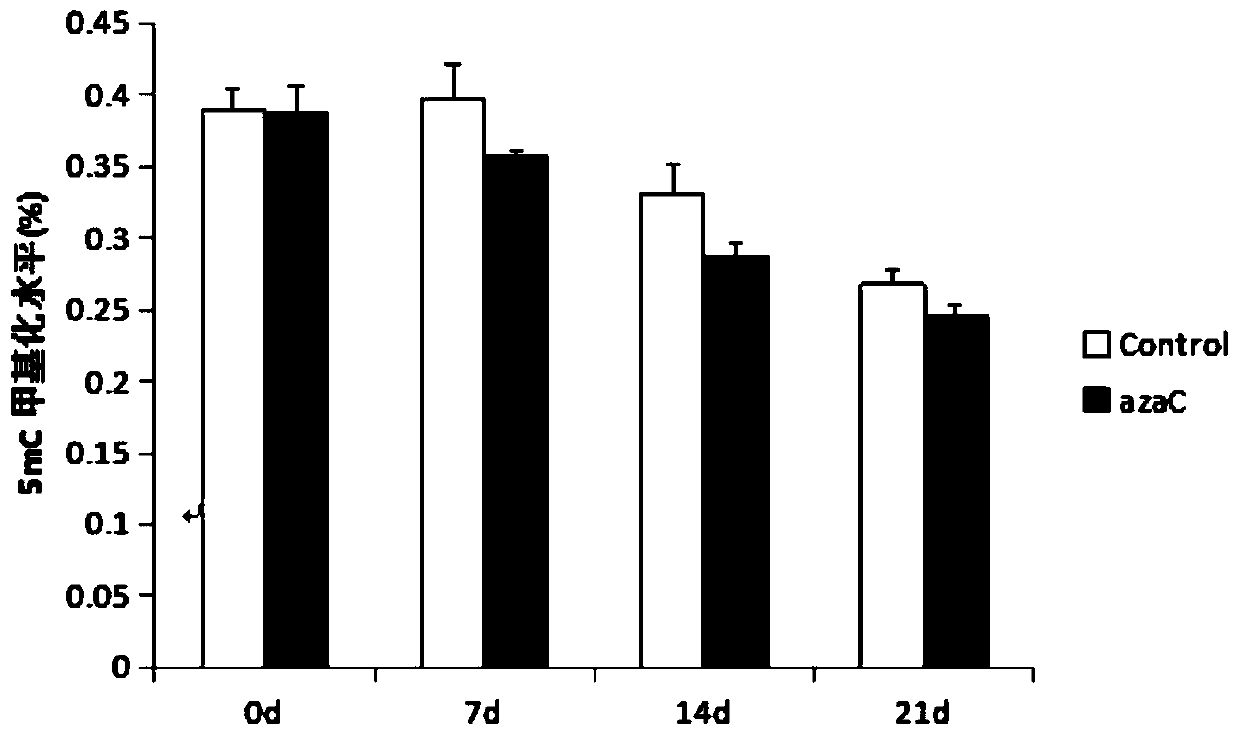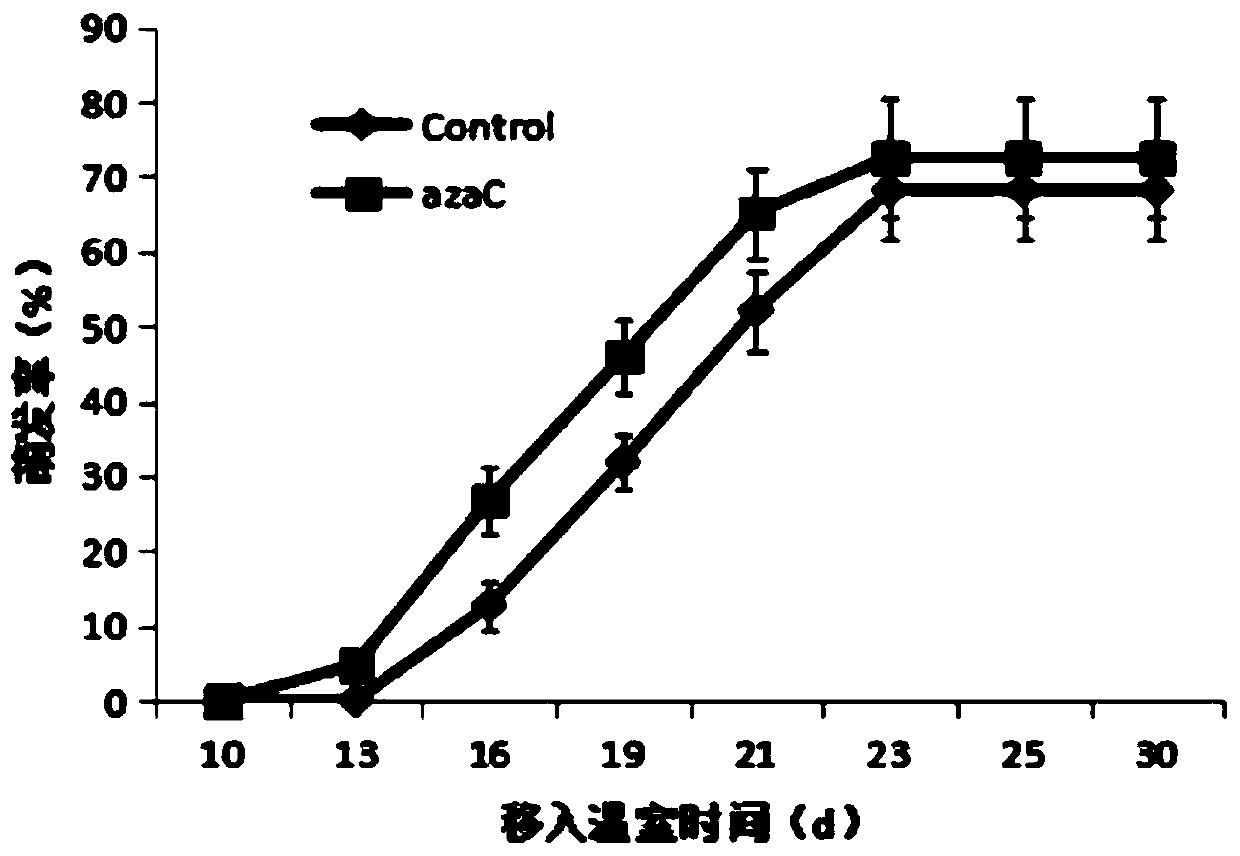Method for promoting off-season peony flower bud sprouting and branch growth
An anti-season and peony technology, applied in the field of plants, to achieve the effect of reducing the methylation level, improving the quality of flower formation, and increasing the flower formation rate
- Summary
- Abstract
- Description
- Claims
- Application Information
AI Technical Summary
Problems solved by technology
Method used
Image
Examples
Embodiment 1
[0019] The material used in this embodiment is four-year-old Luhehong (Peaonia.suffruticosa cv'Luhehong').
[0020] A method for promoting bud germination and branch growth of off-season peony, comprising the following steps:
[0021] Upper potting: In mid-to-late October, select 4-5-year-old plants suitable for flowering and raise seedlings. Soak the roots of peonies to sterilize and dry them in the shade. The finely screened soil is mixed with cow dung, vermiculite, etc., and potted, and the peony is planted in the flowerpot, watered thoroughly, and placed at natural temperature for about 20 days to promote rooting and survival of the peony.
[0022] Low-temperature treatment: when the average temperature was lower than 10°C on November 10, it was moved to a cold storage at a constant temperature of 4°C for low-temperature treatment. Low temperature treatment is 0d, 14d, 21d and 28d.
[0023] Greenhouse management: After moving into the greenhouse, adopt variable temperat...
Embodiment 2
[0028] The material used in this example is different from Example 1, which is the four-year-old Luhehong (Peaonia.suffruticosa cv'Luhehong') of the 14d low temperature treatment group.
[0029] In the 14d low temperature treatment group, 5-azaC was applied to smear flower buds, the effective concentration of 5'-azaC was 10-100 μmol / L, and the treatment times were 1-7 times, once a day.
[0030] Peonies treated with different effective concentrations of 5'-azaC were moved into the greenhouse for morphological observation and recording, and the days required for bud germination, germination rate, final flowering rate and flowering quality were counted. The germination rate standard is that the bud scales of the terminal buds are cracked, and the height of the flower buds exceeds 3cm. The flowering standard is that the flowers have opened or the buds have swelled to the extent that they can bloom. The judging of the flowering quality needs to be evaluated based on the height of...
Embodiment 3
[0033] The material used in this example is the four-year-old Luhehong (Peaonia.suffruticosa cv'Luhehong') of different low-temperature treatment groups in Example 1.
[0034] Different low temperature treatment groups were applied with 5-azaC to smear flower buds, the effective concentration of 5'-azaC was 50 μmol / L, and the number of smears was 5 times, and smeared once a day.
[0035] The peonies treated at different low temperatures were moved into the greenhouse for morphological observation and recording, and the days required for bud germination, germination rate, final flowering rate and flowering quality were counted. The germination rate standard is that the bud scales of the terminal buds are cracked, and the height of the flower buds exceeds 3cm. The flowering standard is that the flowers have opened or the buds have swelled to the extent that they can bloom. The judging of the flowering quality needs to be evaluated based on the height of the branches, whether th...
PUM
 Login to View More
Login to View More Abstract
Description
Claims
Application Information
 Login to View More
Login to View More - R&D
- Intellectual Property
- Life Sciences
- Materials
- Tech Scout
- Unparalleled Data Quality
- Higher Quality Content
- 60% Fewer Hallucinations
Browse by: Latest US Patents, China's latest patents, Technical Efficacy Thesaurus, Application Domain, Technology Topic, Popular Technical Reports.
© 2025 PatSnap. All rights reserved.Legal|Privacy policy|Modern Slavery Act Transparency Statement|Sitemap|About US| Contact US: help@patsnap.com



